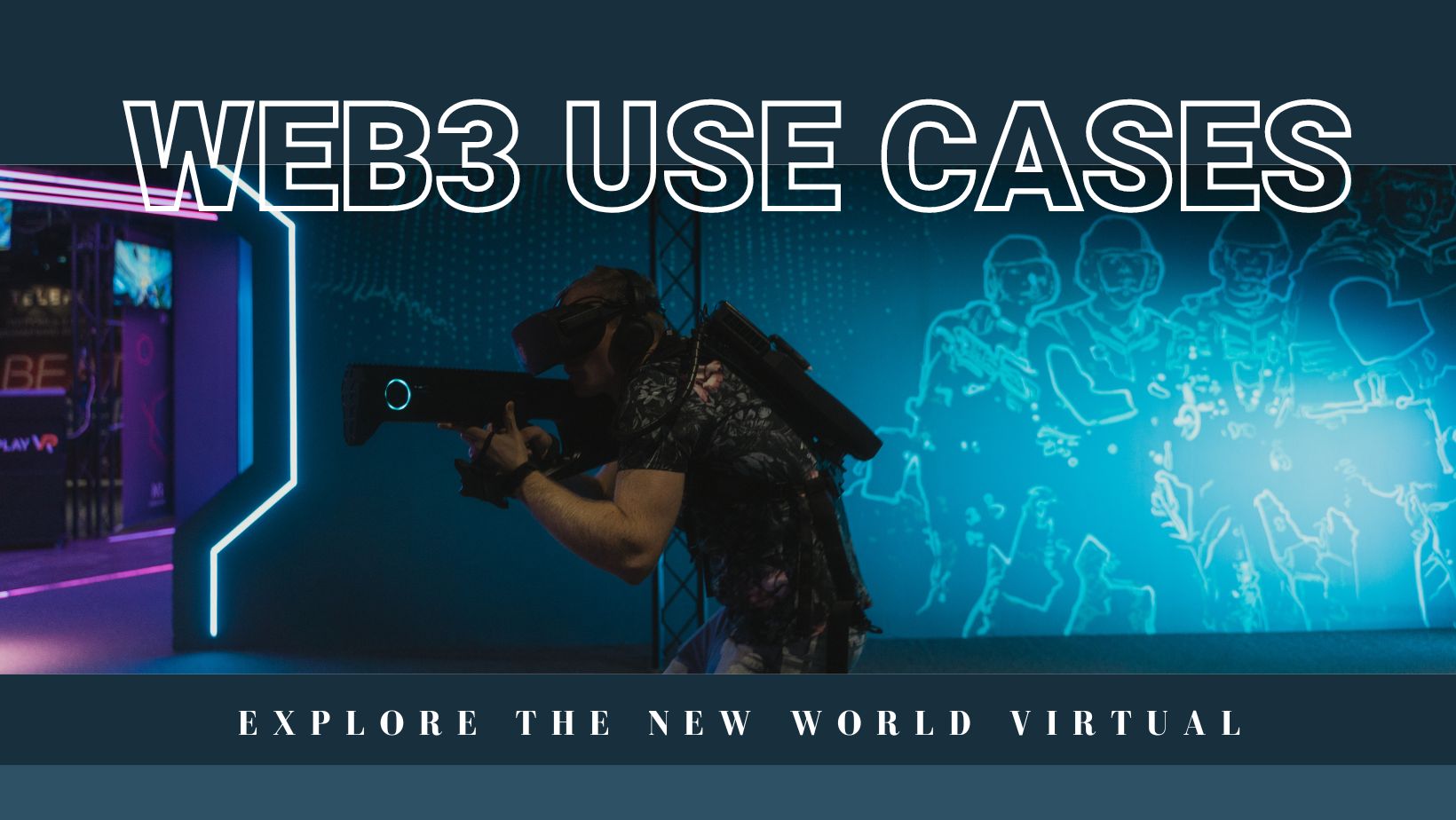The various milestones in the development of the Internet have been nothing short of revolutionary. Open protocols provided the framework upon which the Internet was built.
Web 1.0, the first iteration of the Internet, is responsible for creating some of the most iconic web properties and platforms. Web 2.0, the next iteration of the World Wide Web after Web 1.0, is characterized by the convergence of open and closed protocols. But now, a new phenomenon is emerging called Web 3.0, and its goal is to give users much more control over their online experience.
What is Web3?
Simply put, Web3 or Web 3.0 is the next generation of the Internet. It paves the way for distributed systems to provide users with more rapid and individualized interactions. Several cutting-edge methods, such as machine learning, the semantic web, and AI, aid in web3’s evolution. In addition, blockchain web3 use cases illustrate how web3 and cryptographic security collaborate to protect user data. The following are some of web3’s distinguishing features.
Web3 is accessible to all because it runs on open-source software.
Due to the nature of Web3 networks, users and service providers are not required to obtain approval from any authoritative third party.
Users can communicate privately and publicly in a trustless setting is another powerful feature of web3 use cases.
Web3’s ubiquity is arguably its most attractive feature, as it promises constant access to the web regardless of time, place, or medium. To give one concrete example, IoT technology enables access to internet services via various intelligent devices, not just voice assistants.
Features of Web3
Semantic Web
The semantic web is what Web 3.0 is about; semantics is the study of natural language and logic. Web 3.0 was conceived of by Tim Berners, creator of the World Wide Web, as the Internet’s ability to read and process data without human intervention.
Decentralized Web
Web3 is driven by concepts and technologies like blockchain, self-sovereign identity, and decentralized storage systems, which redefine data ownership and give users control.
Metaverse Capabilities
We create interactive games, online stores, and near-field communication (NFC) marketplaces using Web 3.0’s metaverse and 3D capabilities to meet the needs of businesses.
Robust Data Management
Web3 is built on top of a new data management infrastructure that uses cutting-edge tools like blockchain and decentralized peer-to-peer networks.
Existing and Future Web3 Use Cases
Metaverse and Metaspaces
The goal of the virtual reality (VR) world known as the “Metaverse” is to create an environment where the two can coexist. Metaverse projects can be managed centrally or distributedly; however, web2 suggests that the latter is more in line with what will be required in the future. To improve the users’ decentralized experience, metaverse projects can use the web3 ecosystem and its connectivity features. Through the Internet of Things (IoT) and artificial intelligence (AI), Web3 strengthens the metaverse and makes it more realistic.
Blockchain Games
Many of you may think of blockchain-based gaming as the most striking application of Web3. These blockchain-based games feature unique economies in which players can claim legal titles to virtual items.
When asked, “What is web3 used for in gaming?”, “Web3 Game Development” is often a prominent answer. This is especially true when one considers that game development is one of the earliest uses of Web3.
DAOs
Web3 can only function with DAOs or decentralized autonomous organizations. DAOs allow for the flipping of power from a corporate top-down pyramid to a user-focused decentralized form. One of web3’s most promising applications is DAOs.
DAOs serve as both financial institutions and administrative bodies. To understand how they function, consider the following:
- Like tenants in a house, token holders on a blockchain platform agree to follow the DAO’s rules.
- A smart contract encoding these regulations is then implemented on a blockchain.
- In the DAO, tokens are pooled by the smart contract. These tokens then function as a means of contributing to a particular project’s funding and having one’s vote counted in that proportion.
- A DAO may even rebel against its original designer in rare cases. Yuga Labs, a web.3 company, proposed building the Otherside metaverse’s ApeCoin DAO on a new, independent blockchain rather than keeping it on Ethereum. But the APE token holders rejected the proposal by a narrow margin of 3.8 million to 3.3 million.
Decentralized Finance
Payment blockchains are a particularly salient example of web 3.0 applications in DeFi. Using DeFi, payment blockchains are now possible, allowing for instantaneous, decentralized digital exchanges between individuals. DeFi is one of the most compelling examples of a web 3.0 application that increases the likelihood that digital currencies will be used.
With the availability of low-cost, peer-to-peer, almost instantaneous, and borderless transactions, the significance of DeFi becomes readily apparent. The DeFi payment blockchain is a web3 model for improving financial inclusion. Blockchains for monetary transactions hold great potential for enhancing current monetary systems. To give just one use case, cryptocurrencies can be a crucial tool for getting aid to people who don’t have bank accounts. DeFi uses blockchain technology to achieve the necessary openness to prevent waste, fraud, and abuse.
Decentralized Browsers
Web3 decentralized browsers keep the standard features of traditional browsers while allowing users to interact efficiently with dApps built on the back of blockchain technology.
The latest browsers provide their users with numerous advantages, such as increased privacy and security, streamlined operations, and the assurance that their personal information will remain private. Users of web3 browsers can also earn money for interacting with content or viewing advertisements.
Decentralized Streaming
The market for online video and music streaming has grown significantly in recent years.
On the other hand, centralized streaming sites are still accessible. This indicates that they pose several problems and may lead to discussions about ethical promotion algorithms, data collection, and privacy concerns.
On the other hand, users and creators have more privacy options with decentralized streaming services enabled by blockchain technology. Additionally, they facilitate content curators’ access to their funds or exchange them as NFTs. NFT minting websites make the minting process easy.
Social Media
With the advent of SocialFi, we now have a novel way to interact with content while socializing online. This will help us face and combat the challenges associated with free speech and monetization.
Incorporating web3 social media platform development principles lets users create, control, and, most importantly, own their content.
Privacy and Security
Applications like spectrum, completely decentralized, are quickly becoming web3’s answer to messaging giants like WhatsApp and WeChat. The goal of Web 3.0 is to ensure anonymity and security by facilitating communication without the need to reveal personal information such as a phone number or email address. Web 2.0, the current iteration of the Internet, is a centralized system that can be used to track down an individual. The server owner stored the data.
In addition, we can find many decentralized video streaming services, such as Dtube, where we can watch videos of our choosing. In order to illustrate, let’s use YouTube as an example. As it stands, YouTube can predict which videos its users will enjoy and highlight them in their feeds. However, in Web 3.0, this will be different.
They also play a pivotal role in determining which users and videos can be monetized. This is done in accordance with rules set by the site’s owner.
Understanding the Role of Web3
Depending on the setting, either overly simple or overly complex definitions of Web3 are common. We’ve covered some of its key features, but what are the underlying technical principles?
Typically, the technical architecture of Web3 is built on top of the blockchain, smart contracts, protocol-based networking, and open-source tools.
Cryptocurrencies, stablecoins, tokens, and other asset classes like fungible and NFT currencies are recorded on decentralized networks. Due to their dynamic nature, Web3’s digital assets are easily distinguished from imposters in appearance and authenticity.
Various interface applications are part of Web3’s user experience (UX). Popular browser-based websites that offer a cryptocurrency wallet, dApps (or “decentralized applications”), and 3D virtual worlds that function similarly to the metaverse are all examples.
There has been a huge increase in funding, talent, applications, and corporate interest in the Web3 project, which is predicted to reach a record high in 2021, even though Web3 is still just a concept for the Internet.
Some Final Thoughts
Web3 is in its infancy, but it has already demonstrated its ability to alter the status quo in several ways.
We now see the cutting-edge technology concept of web3 being implemented in fields like the creator economy, gaming, science, and social media. The number of Web3 Use Cases
and applications continue to grow. Decentralized browsers, streaming, and cloud storage solutions have been gaining popularity, and we will likely see many more fully-fledged projects shortly.





